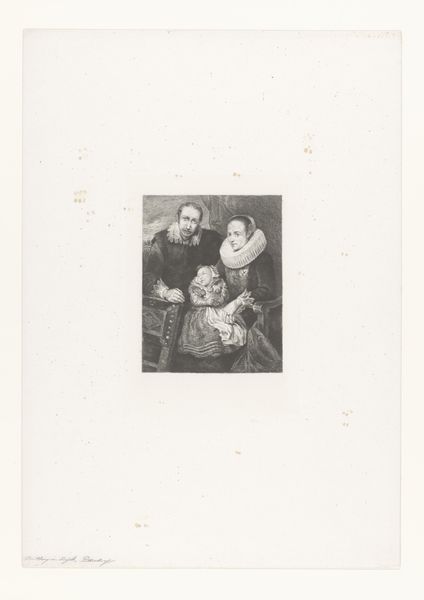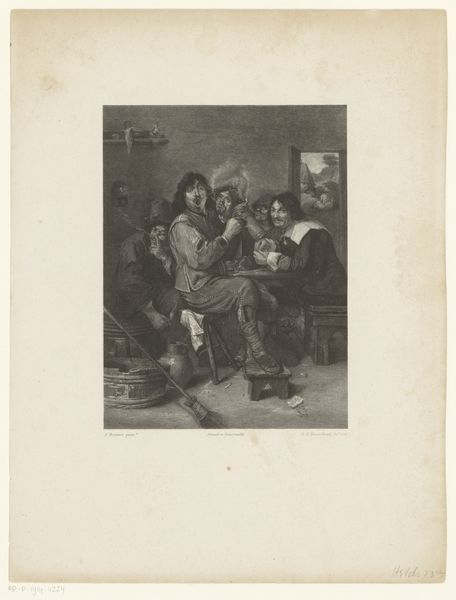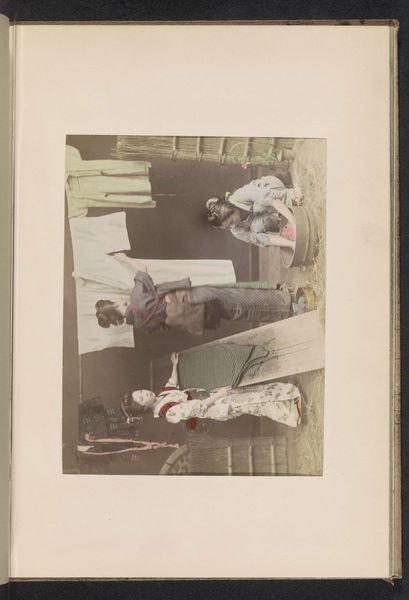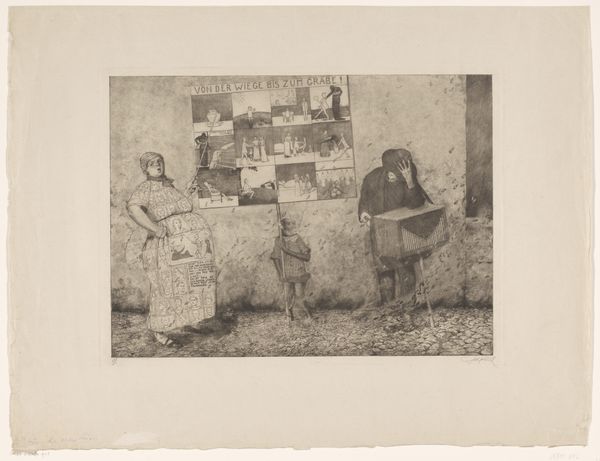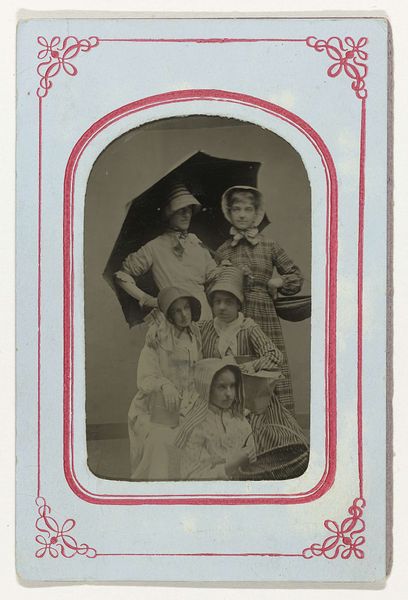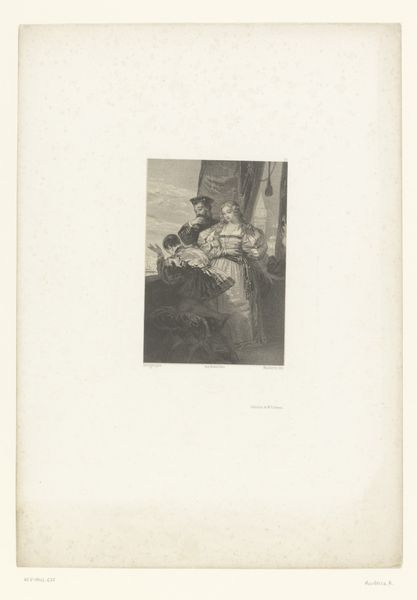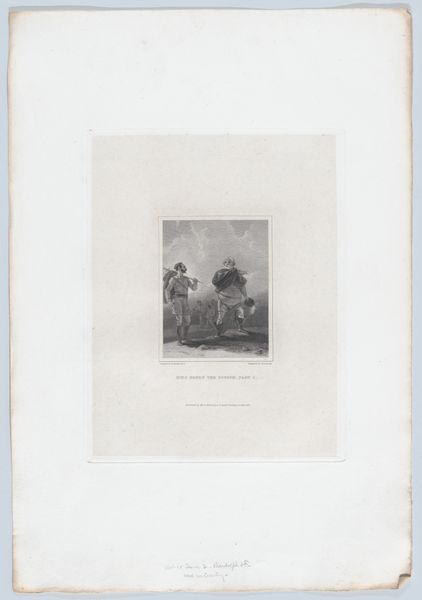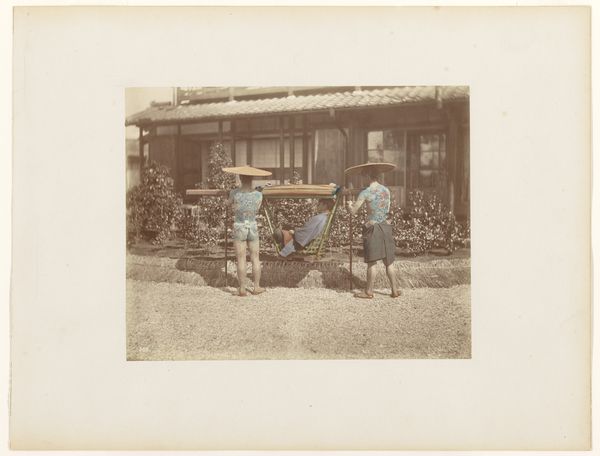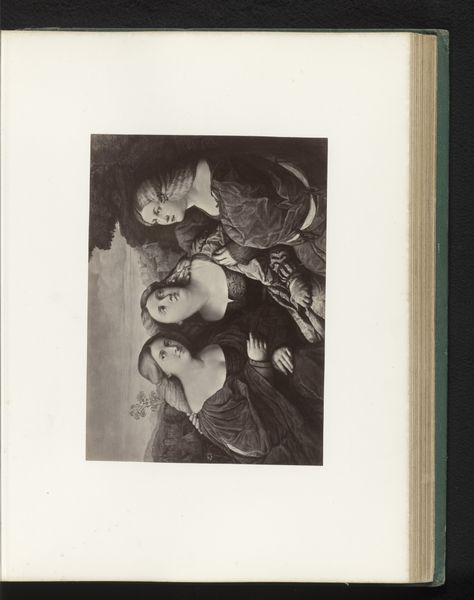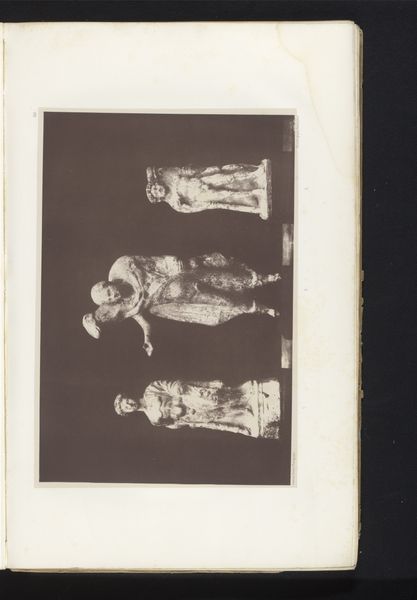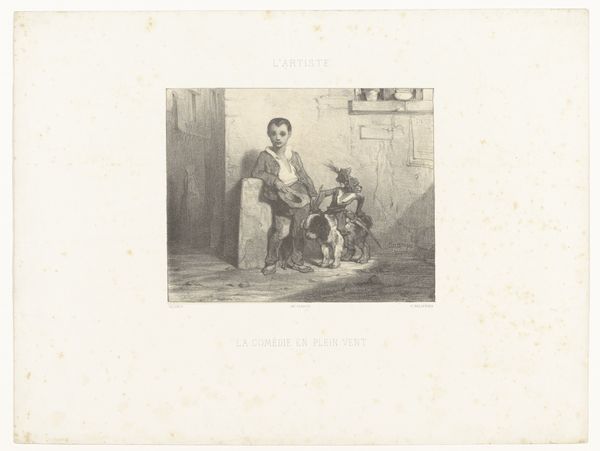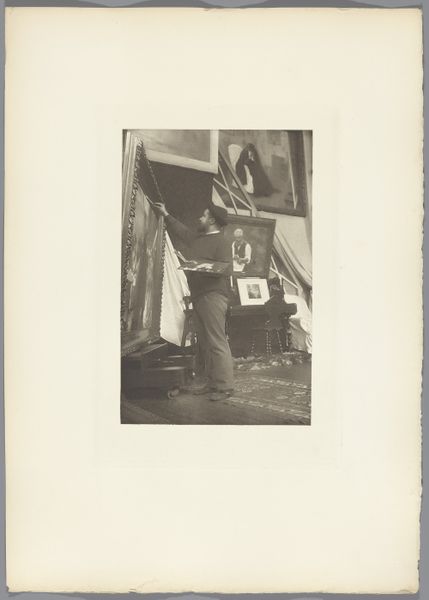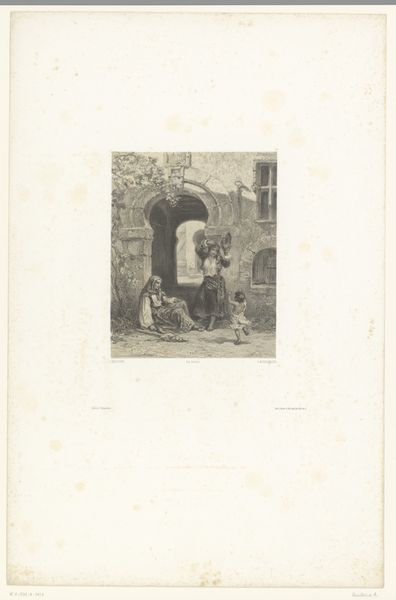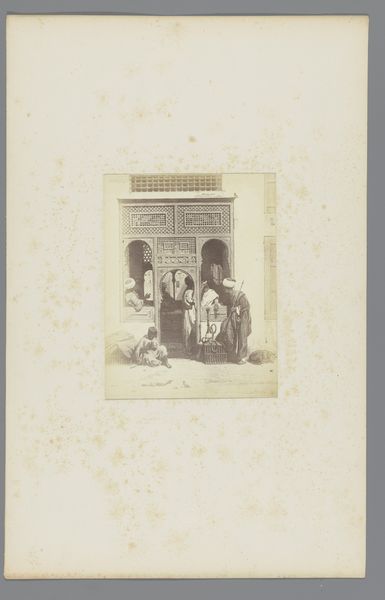
photography, gelatin-silver-print
#
portrait
#
asian-art
#
photography
#
gelatin-silver-print
#
genre-painting
Dimensions: height 240 mm, width 910 mm, height 403 mm, width 310 mm
Copyright: Rijks Museum: Open Domain
Curator: Here we have a gelatin silver print titled "Jonge Japanse straatartiesten met een trommel," which translates to "Young Japanese Street Performers with a Drum," by Raimund von Stillfried. The Rijksmuseum holds this work that dates roughly between 1871 and 1881. What’s your first reaction to it? Editor: They seem rather posed and melancholy despite their colorful outfits. The muted palette, despite the suggested performance context, gives it a sense of quietude. Are they really street performers? Curator: It's complicated. During that period, Western photographers like von Stillfried capitalized on Japan's newfound openness, creating images often tailored to European tastes. These genre scenes weren't always documentary. They were frequently staged with models. Editor: Ah, so we need to consider how the photographer, a European man, constructs and markets his view of Japan. These aren’t just children playing music; it’s a carefully crafted Orientalist representation intended for consumption. Curator: Precisely! Consider how their clothes look somewhat idealized and “traditional,” a visual shorthand for Japan in the Western imagination. These images were circulated as postcards and souvenirs, solidifying those perceptions. Editor: And the performance itself becomes secondary. Their individual expressions fade. What matters is the exotic “flavor” this photograph lends to the colonizing eye, a flattening of complex realities to fulfill orientalist fantasies. We lose the context of what music might mean in these young lives, who are made to simply represent 'Japan' instead. Curator: Yes. Stillfried operated a very successful studio in Yokohama catering largely to tourists and he likely hired people to represent various local types and professions. In viewing this photograph, we must ask ourselves what sort of gaze does this perpetuate, and for whose consumption? Editor: It’s a critical reminder that photographs, even seemingly innocent ones, are never neutral. They can actively shape, reinforce, and distort socio-political power dynamics. And it's important that museums contextualize such legacies instead of perpetuating them. Curator: Agreed. Thinking critically about this historical framework can help us deconstruct assumptions we have regarding identity and representation. Editor: Precisely. Thank you for sharing, it gave me plenty to reflect on.
Comments
No comments
Be the first to comment and join the conversation on the ultimate creative platform.
